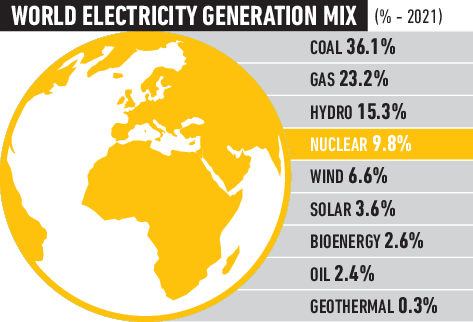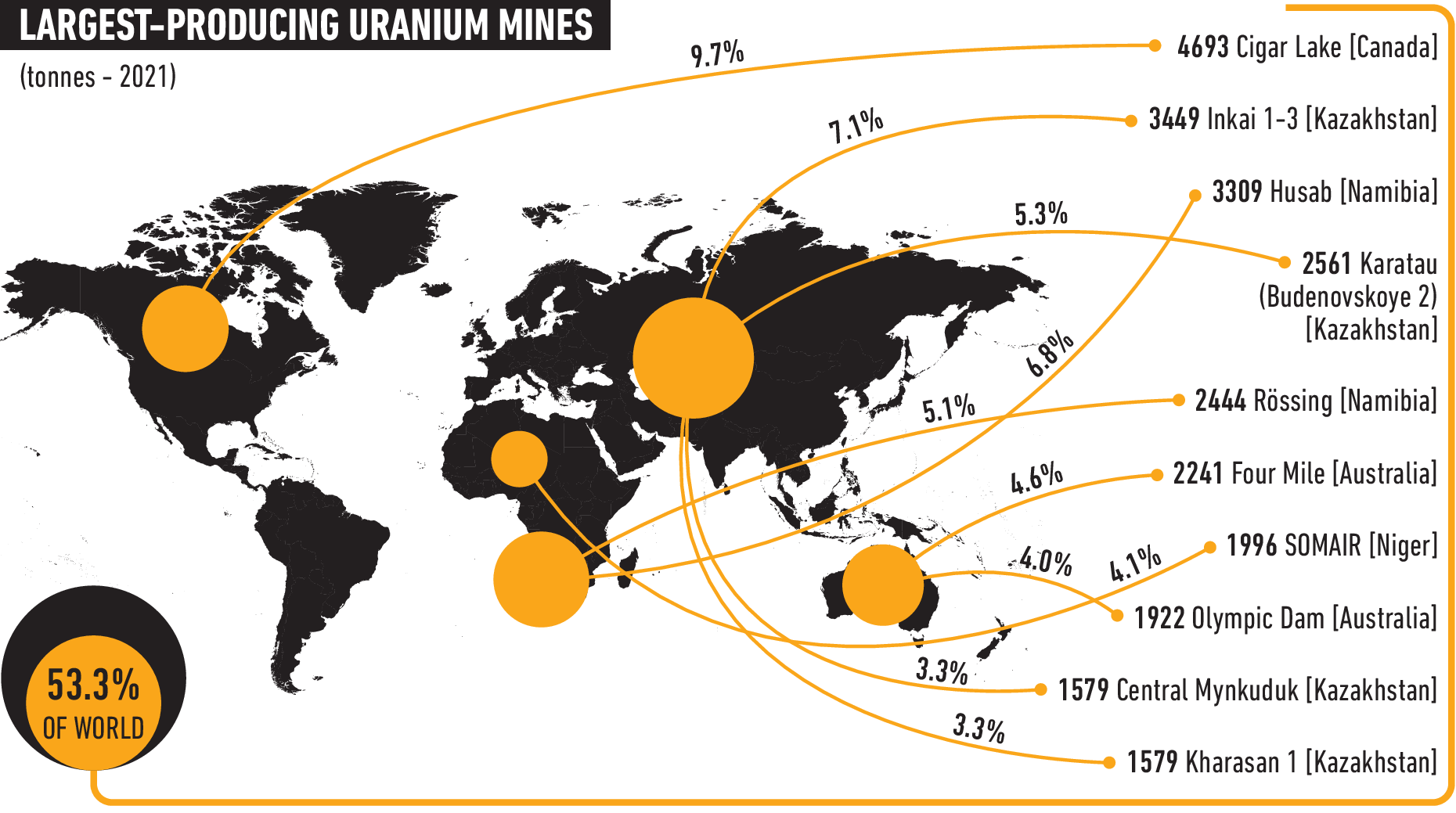
Energy Sources: Nuclear
The principle is simple: the matter contains an enormous amount of energy concentrated in the nucleus of every atom. Humans have found a way to release it in a controlled manner by splitting the nuclei of heavy so-called "radioactive" elements, such as uranium. This element is found in very low concentrations in many rocks in the form of uranium oxide. Uranium deposits are distributed unevenly across the planet. Australia has about 30% of global reserves, followed by Kazakhstan (13%), Canada (9%) and Russia (8%). In terms of quantity of ore extracted, Kazakhstan occupies first place with 39% of global production.
Nuclear power plants use the heat generated by controlled nuclear fission to turn the steam turbines and create electricity. The nerve centre is the "reactor", where the radioactive fuel is found and the chain reaction takes place. It is an energy source whose use, despite criticism, is growing rapidly in newly industrialised countries such as China, India and Russia. In terms of efficiency, it is an alternative to fossil fuels as it does not emit greenhouse gases. The problems relate to other aspects such as the danger of radiation in the event of an accident and the production of radioactive waste, which is difficult to neutralise.
- BP, Statistical Review of World Energy 2022;
- EIA (US Energy Information Administration), International Energy Statistics [Last accessed 21 December 2022];
- IAEA (International Atomic Energy Agency), Power Reactor Information System Database [Last accessed 21 December 2022];
- IEA (International Energy Agency), World Energy Outlook 2022;
- WNA (World Nuclear Association), World Uranium Mining Production [Last accessed 21 December 2022];
